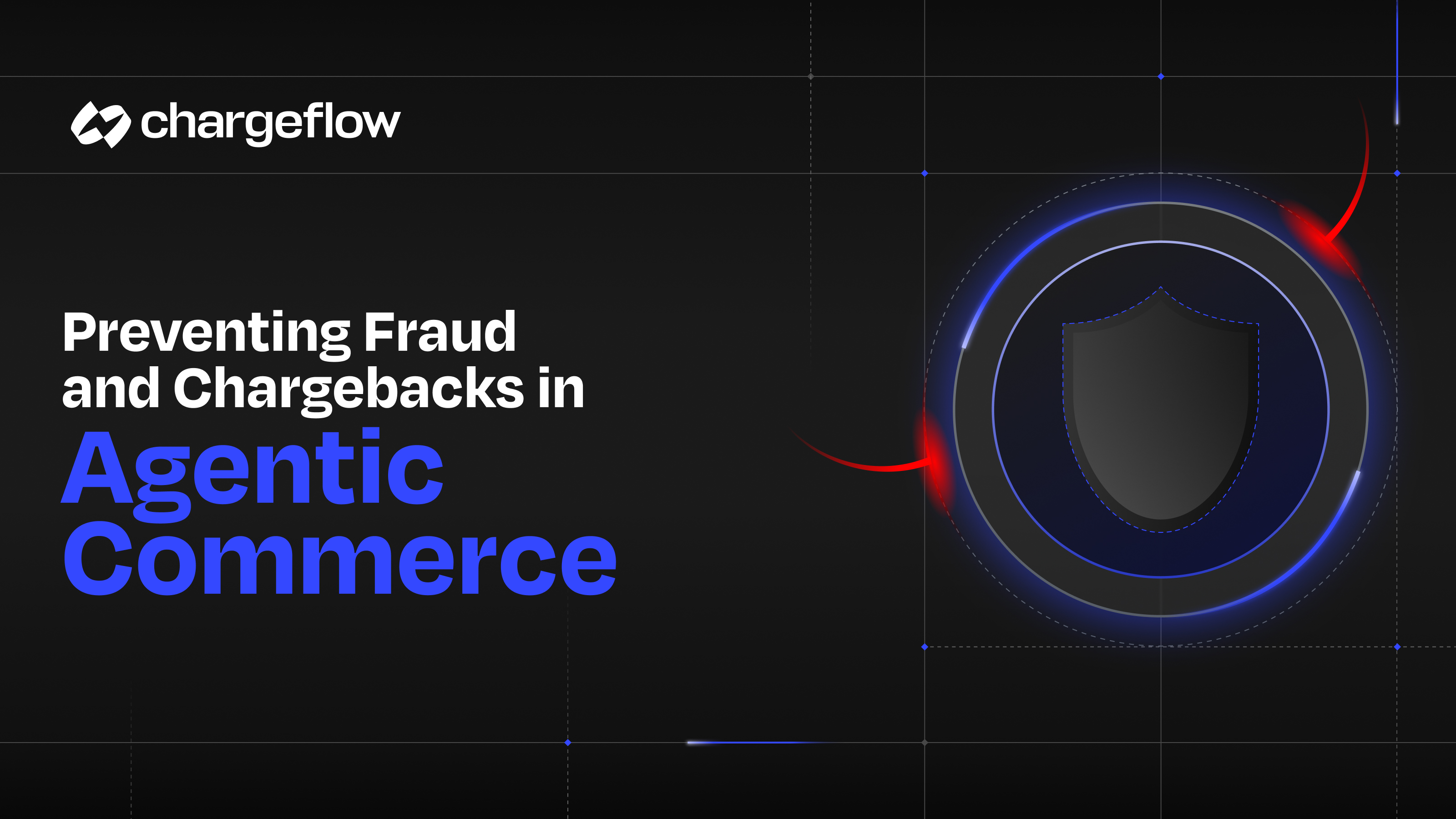Unlocking Customer Success: The Key to Fraud Prevention

Chargebacks?
No longer your problem.
Recover 4x more chargebacks and prevent up to 90% of incoming ones, powered by AI and a global network of 15,000 merchants.
Unlock the power of customer success in preventing fraud. Discover how proactive strategies and exceptional service can safeguard your business.
Fraud: A word that strikes fear in the hearts of merchants everywhere. As a business owner, you work hard to build a reputable brand and attract loyal customers. But lurking in the shadows are fraudsters, ready to exploit any vulnerability they can find. That's where customer success comes in.
In this article, we're going to dive deep into the world of customer success and how it can be a powerful weapon in your arsenal against fraud. Picture this: a customer who not only buys from you but also becomes an advocate for your brand. They stick around, trust your business, and refer others to you. Sounds like a dream, right?
Well, it's not just a dream. It's the reality that customer success can bring to your business. By focusing on the success and satisfaction of your customers, you're not only preventing churn but also creating a strong line of defense against fraudulent activities.
Think about it. When your customers trust you, they are more likely to reach out to you if something seems off. They become your eyes and ears on the front lines, alerting you to any suspicious activity they encounter. With their help, you can quickly identify and mitigate potential fraud risks, keeping your business safe and secure.
So, get ready to unlock the power of customer success and discover how it can be the key to safeguarding your business against fraud. It's time to take control and protect what you've worked so hard to build.
Let's dive in!
The Fundamentals of Customer Success
Customer success is more than just ensuring customer satisfaction; it's about going above and beyond to help your customers achieve their desired outcomes. It's about forging lasting partnerships, providing proactive support, and continuously adding value to their journey.
By prioritizing customer success, you create a solid foundation for building trust and loyalty, which are vital in fraud prevention.
The Three Pillars of Customer Success
To implement a robust customer success strategy, you need to focus on three key pillars: customer onboarding, proactive communication, and ongoing support and education. Let's dive into each of these pillars to understand their significance in the fight against fraud.
1. Customer Onboarding: Setting the Stage for Success
Effective customer onboarding is the critical first step in the customer success journey. It involves guiding your customers through the initial stages of using your product or service and ensuring they have a seamless experience.
By providing clear instructions, personalized assistance, and access to relevant resources, you not only set your customers up for success but also gain valuable insights into their needs and behaviors, allowing you to spot potential red flags related to fraudulent activities.
2. Proactive Communication: Building Trust and Staying Alert
Maintaining open lines of communication with your customers is essential for fostering trust and transparency. Proactively reach out to them, whether through email, phone calls, or even social media, to check on their progress, address any concerns, and provide additional guidance.
Regular communication not only helps you build strong relationships but also enables you to identify any suspicious behavior or unusual patterns that may indicate fraudulent activity. By staying alert and vigilant, you can nip potential fraud in the bud and protect your business.
3. Ongoing Support and Education: Empowering Customers and Safeguarding Your Business
Customer success doesn't end after the initial onboarding phase; it's an ongoing commitment. Continuously provide support, training, and educational resources to help your customers maximize the value they derive from your product or service.
By empowering them with knowledge and skills, you not only enhance their overall experience but also reduce the chances of falling victim to fraud. Educated and informed customers are less likely to engage in risky behaviors that could compromise their security or your business.
Case Studies: Customer Success in Action
Customer success case studies are a great way to learn how other businesses have used customer success to achieve their goals. Here are a few examples:
- Amazon: Amazon uses customer success to help its customers get the most out of its products and services. For example, Amazon provides customers with personalized recommendations, training resources, and support. This helps Amazon to keep its customers happy and engaged, which in turn leads to increased sales and customer loyalty.
- Netflix: Netflix uses customer success to help its customers find the content they love. Netflix's recommendation engine uses customer data to suggest movies and TV shows that customers are likely to enjoy. This helps Netflix to keep its customers engaged and coming back for more.
- Salesforce: Salesforce uses customer success to help its customers achieve their business goals. Salesforce provides customers with consulting services, training, and support. This helps Salesforce's customers to get the most out of Salesforce's products and services, which in turn leads to increased sales and customer satisfaction.
These are just a few examples of how customer success can be used to achieve business goals. By following the best practices outlined in these case studies, businesses can improve their customer success and achieve their business goals.
The Connection Between Customer Success and Fraud Prevention
By understanding the connection between customer success and fraud prevention, you can enhance your defenses and keep your business secure.
Building Trust and Establishing Strong Relationships
Customer success revolves around building trust and establishing strong relationships with your customers. When you prioritize their success, you create a bond built on credibility and reliability. This trust becomes a valuable tool in the fight against fraud.
By fostering a transparent and supportive environment, you encourage customers to provide accurate and honest information. This helps you verify their identities and identify potential red flags.
When customers trust you, they are more likely to cooperate with your fraud prevention measures, providing essential data for detecting and preventing fraudulent activities.
Identifying Suspicious Behavior through Customer Success Interactions
Every interaction with your customers presents an opportunity to gather valuable insights. By closely monitoring these interactions, customer success teams can detect patterns and behaviors that may indicate fraudulent activities.
Engaging with customers enables you to spot inconsistencies or unusual behavior. For example, sudden changes in order patterns, multiple attempts to change account information, or unusual purchase locations can be red flags.
By promptly addressing these concerns, you can investigate further and take appropriate action to prevent potential fraud.
Integrating Customer Success Data with Fraud Detection Systems
To strengthen your fraud prevention efforts, it is crucial to integrate customer success data with your fraud detection systems. By combining these two streams of information, you gain a more comprehensive view of potential risks.
Customer success data, such as customer behavior, preferences, and engagement history, can provide valuable context to supplement traditional fraud detection methods. Analyzing this data alongside fraud-related indicators enhances your ability to identify suspicious activities accurately.
Collaborating with Fraud Prevention Teams
To optimize your fraud prevention strategies, collaboration between your customer success and fraud prevention teams is essential. By sharing insights and working together, you can create a robust framework that combines customer-centric approaches with advanced fraud detection techniques.
Customer success teams can provide real-time information and customer feedback that may aid in fraud prevention efforts. By aligning goals and sharing knowledge, you can develop a proactive approach to fraud prevention that leverages the strengths of both teams.
Leveraging Customer Success Data for Fraud Detection
Customer success data can be a valuable source of information for fraud detection. This data can include information such as:
- Customer account information, such as name, address, and contact information
- Customer purchase history
- Customer login activity
- Customer device information
- Customer IP address
By analyzing this data, fraud detection systems can identify patterns that may indicate fraudulent activity.
For example, a system might flag a customer account as suspicious if the customer suddenly starts making a large number of purchases in a short period of time, or if the customer is logging in from a new device or IP address.
In addition to customer success data, fraud detection systems can also be used to analyze other types of data, such as social media data and payment card data.
By combining data from multiple sources, fraud detection systems can get a more complete picture of a customer's activity and identify fraudulent activity more accurately.
Here are some of the benefits of leveraging customer success data for fraud detection:
- Improved accuracy: By analyzing customer success data, fraud detection systems can identify patterns that may indicate fraudulent activity more accurately. This can help to reduce the number of false positives, which can save time and money.
- Reduced fraud losses: By identifying fraudulent activity early, fraud detection systems can help to reduce fraud losses. This can save businesses money and protect their customers from financial harm.
- Enhanced customer experience: By using customer success data to identify fraudulent activity, businesses can protect their customers from fraud and ensure that they have a positive customer experience.
However, there are also some challenges to leveraging customer success data for fraud detection:
- Data privacy: Businesses need to be careful about how they collect and use customer data for fraud detection. They need to make sure that they are collecting data in a way that complies with data privacy laws, and they need to use data only for the purposes for which it was collected.
- Data accuracy: The accuracy of customer success data is important for fraud detection. If the data is inaccurate, it can lead to false positives or false negatives. Businesses need to make sure that they are collecting data from reliable sources and that they are using data quality tools to ensure the accuracy of the data.
Overall, leveraging customer success data for fraud detection can be a valuable way to protect businesses from fraud and protect their customers from financial harm. However, businesses need to be aware of the challenges involved in using this data and take steps to mitigate those challenges.
Customer Success Best Practices for Fraud Prevention
Customer success best practices for fraud prevention can help businesses to protect themselves from fraud and ensure that their customers have a positive experience. Here are some of the best practices:
- Build trust with your customers: This means providing excellent customer service, being transparent about your policies, and making sure that your customers feel secure when they do business with you.
- Collect and use customer data wisely: Use customer data to build a profile of each customer and to identify patterns that may indicate fraudulent activity. However, be careful not to collect too much data or to use data in a way that violates customer privacy.
- Use fraud detection tools: There are a number of fraud detection tools available that can help you to identify fraudulent activity. These tools can be used to analyze customer data, identify patterns, and flag suspicious activity.
- Be proactive: Don't wait for fraud to happen. Be proactive in identifying and preventing fraud. This means monitoring your customer data, reviewing your fraud detection tools, and training your staff on fraud prevention.
- Have a plan in place: If fraud does happen, have a plan in place to deal with it. This plan should include steps to investigate the fraud, protect your customers, and recover any losses.
Here are some additional tips for customer success and best practices for fraud prevention:
- Be clear and transparent with your customers about your fraud prevention policies. This will help to build trust and reduce the risk of friendly fraud.
- Make it easy for customers to report suspicious activity. Provide clear instructions on how to report fraud and make sure that your customer service team is responsive to reports.
- Reward customers for reporting fraud. This will encourage customers to report suspicious activity and help to protect your business from fraud.
By following these tips, businesses can help to create a culture of fraud prevention and protect themselves from fraud.
Is There a Connection Between Customer Success and Chargeback Fraud?
A poor customer success strategy can increase the risk of chargeback fraud. For example, if customers have a negative experience with customer service, they may be more likely to file fraudulent chargebacks out of frustration.
Additionally, if customers do not understand the company's policies, they may be more likely to file fraudulent chargebacks because they believe that they are entitled to a refund.
Therefore, it is important for businesses to have a strong customer success strategy in place to help reduce chargeback fraud.
By building trust with customers, providing excellent customer service, being transparent about policies, and making it easy for customers to report fraud, businesses can help to create a culture of fraud prevention and protect themselves from chargeback fraud.

Chargebacks?
No longer your problem.
Recover 4x more chargebacks and prevent up to 90% of incoming ones, powered by AI and a global network of 15,000 merchants.






























.png)








